二十世纪之中国艺史,傅抱石之横空出世,可谓奇迹。
傅抱石,生于清光绪三十年九月初五,殁于公元一九六五年八月二十六日,江西南昌人,祖籍新喻北岗樟塘村。初名长生,字庆远,学名瑞麟,号抱石斋主人。其人乃近现代中国画家、美术史论家、书法家、美术教育家,亦为“新山水画”之代表。
In the twentieth century, the sudden emergence of Fu Baoshi in the history of Chinese art can indeed be considered a miracle.
Fu Baoshi, born on the fifth day of the ninth month in the thirtieth year of the Guangxu reign (1904), and passed away on August 26, 1965. He was a native of Nanchang, Jiangxi, with ancestral roots in Zhangtang Village, Beigang, Xinyu. His original name was Changsheng, with the courtesy name Qingyuan, and the scholarly name Ruilin. He was also known as the Master of Baoshi Studio. Fu was a modern Chinese painter, art historian, calligrapher, and art educator, representing the "new landscape painting."

傅抱石平生,心慕魏晋风度。自屈原《九歌》,至魏晋名士,乃至纵意挥洒之山水,无不追求天性之自由,洒脱豪放,深契自我与自然之会通。正如其年三十左右,作水墨《鹅》,题跋曰:“可恨今无王羲之。”深感当世难觅知音。此则胸臆初发,啼声初试,如灵魂深处之叹息,亦其艺术旅程之自我宣告也。
Throughout his life, Fu Baoshi admired the elegance of the Wei and Jin dynasties. From Qu Yuan's "Nine Songs" to the literati of the Wei and Jin, and to the freehand brushwork of landscapes, he sought a natural freedom, expressing unrestrained and bold sentiments that deeply connected with both self and nature. Around the age of thirty, he created the ink painting "Goose," inscribing it with "Alas, there is no Wang Xizhi today," expressing his lament over the lack of artistic confidants. This initial outburst from his chest, an early cry, seemed like a sigh from the depths of his soul, marking a self-declaration in his artistic journey.
傅抱石画意幽深,章法独创,善用浓墨渲染,水、墨、彩三者交融,浑厚淋漓,气势磅礴。其于传统技法之上,推陈出新,独步艺林,解放后之山水画,因之焕然一新。人物画则线条劲健,传神之妙,尽在其中。崇尚革新,东瀛研画,融会贯通,受蜀中山水气象启发,创独特“抱石皴”法。人物画承顾恺之、陈老莲之韵,然蜕变自成,别开生面。人物多取材于古代文学名著,笔触洗练,气韵生动,出神入化。其形象虽乱头粗服,却矜持恬静,线条凝练,勾勒之中,注重速度、压力、面积变化,别具一格。复融山水技法于人物画,改清代以来之画风,成独特艺术风貌。
Fu Baoshi's artistic conception was profound, his compositional methods innovative. He skillfully used heavy ink and shading, integrating water, ink, and color to achieve a thick, unrestrained, and magnificent effect. Building on traditional techniques, he innovated, becoming a leader in the art world, revitalizing post-liberation landscape painting. His figure paintings featured vigorous lines and exquisite expressions of spirit. Valuing innovation, he studied painting in Japan, integrating traditional techniques with Japanese ones, inspired by the grandeur of Sichuan landscapes, creating the unique "Baoshi Texture Stroke." His figure paintings, influenced by Gu Kaizhi and Chen Laolian, evolved to form a distinctive style. His figures, often drawn fromical literature, had refined brushwork and vivid spirit, achieving a divine level of artistry. Despite rough and simple appearances, his figures exuded a serene dignity, with concise lines emphasizing variations in speed, pressure, and area, creating a unique style. He also incorporated landscape painting techniques into his figure paintings, transforming the style since the Qing dynasty and creating a distinctive artistic manner.
傅抱石画中,雄浑淋漓之山色雨景,恰展巴蜀奇丽恢宏之胜,亦寄画者苦闷阴晦之怀,遂成独特题材。其创散锋用笔,图写山水,所成“抱石皴”,粗放中蕴精微,世人耳目一新。
In his paintings, the vast and unrestrained mountain scenes and rain landscapes aptly displayed the magnificent beauty of the Bashu region, while also reflecting the artist's then melancholic mood, forming a unique subject style. He created the "Baoshi Texture Stroke" with scattered brushstrokes, portraying landscapes with a blend of roughness and finesse, leaving a fresh impression on the viewers.
自一九五〇年始,傅氏屡绘以毛泽东诗句为题之诗意图,画作一扫旧时阴霾,呈晴朗浑厚之气。为显新时代气象与己心境,画面增鲜丽青绿朱红诸色。傅氏有言:“笔墨当随时代。”作品无不示其色彩运用之新境。尝新法,辟艺域,然使其名震艺坛者,仍为“抱石皴”也。历年沉淀锤炼,“抱石皴”脱狂放急躁,代以潇洒率真之气。笔墨疏简散淡,信手拈来,内敛精气,健利飘逸。大处气势磅礴,小处细致入微,浑然一体,叹为观止。异域风光,或长白、华山,或镜泊、韶山、井冈,皆妙融笔端,光彩夺目。
From 1950 onwards, Fu Baoshi repeatedly painted poetic images based on Mao Zedong's verses. These works cleared away the old gloom, showing a bright and robust spirit. To express the new era's atmosphere and his own mood, he added bright greens and reds to his paintings. As he said, "Ink and brush should follow the times," his works like "Such a Charming Landscape," "The Dragon and Tiger Today Are Stronger Than Ever," and "The Hibiscus Kingdom Is All in Bright Sunshine" demonstrated his new level of color usage. Experimenting with new methods expanded his artistic space, but what truly made him famous was the "Baoshi Texture Stroke." After years of refining, the "Baoshi Texture Stroke" shed its initial recklessness, adopting a free and genuine character. The brushwork, seemingly sparse and casual, actually contained restrained energy, combining strength and elegance. Grand in overall momentum, meticulous in details, his works formed a coherent whole, leaving viewers in awe. Be it foreign landscapes or famous Chinese sites like Changbai Mountain, Mount Hua, Jingpo Lake, Shaoshan, and Jinggang Mountain, all were skillfully rendered with his brush.

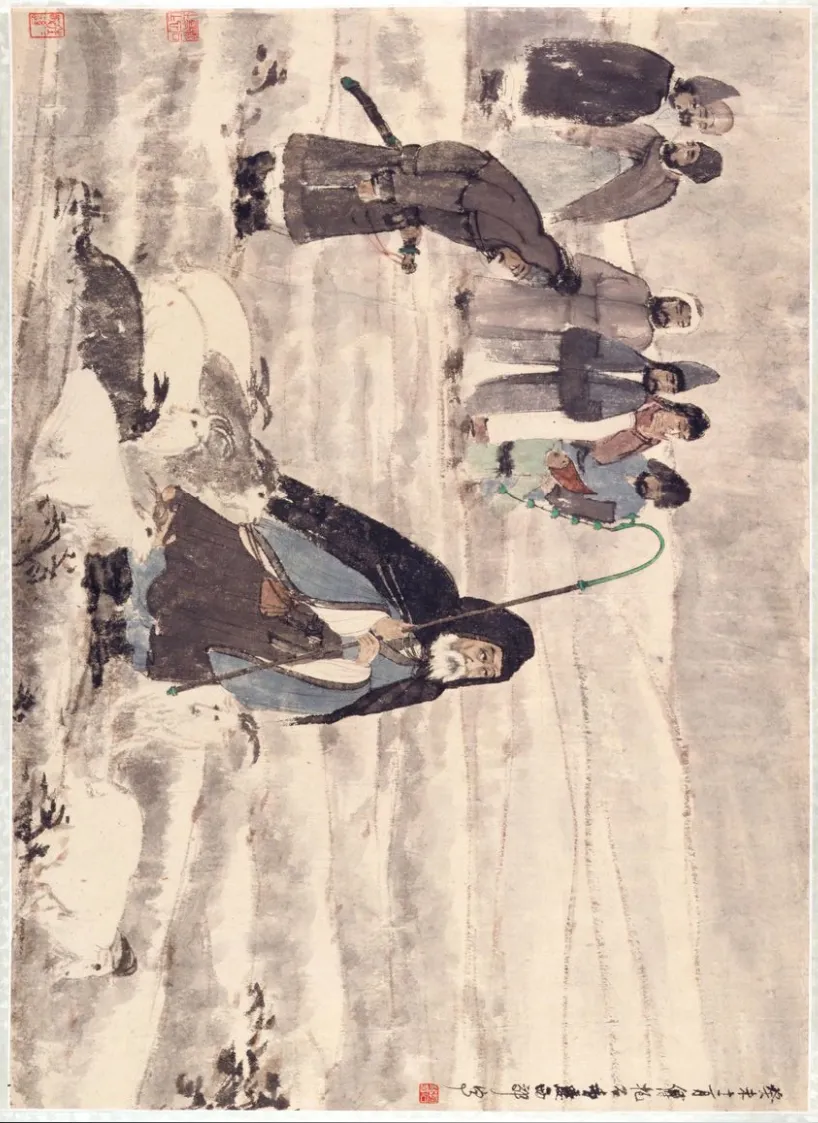


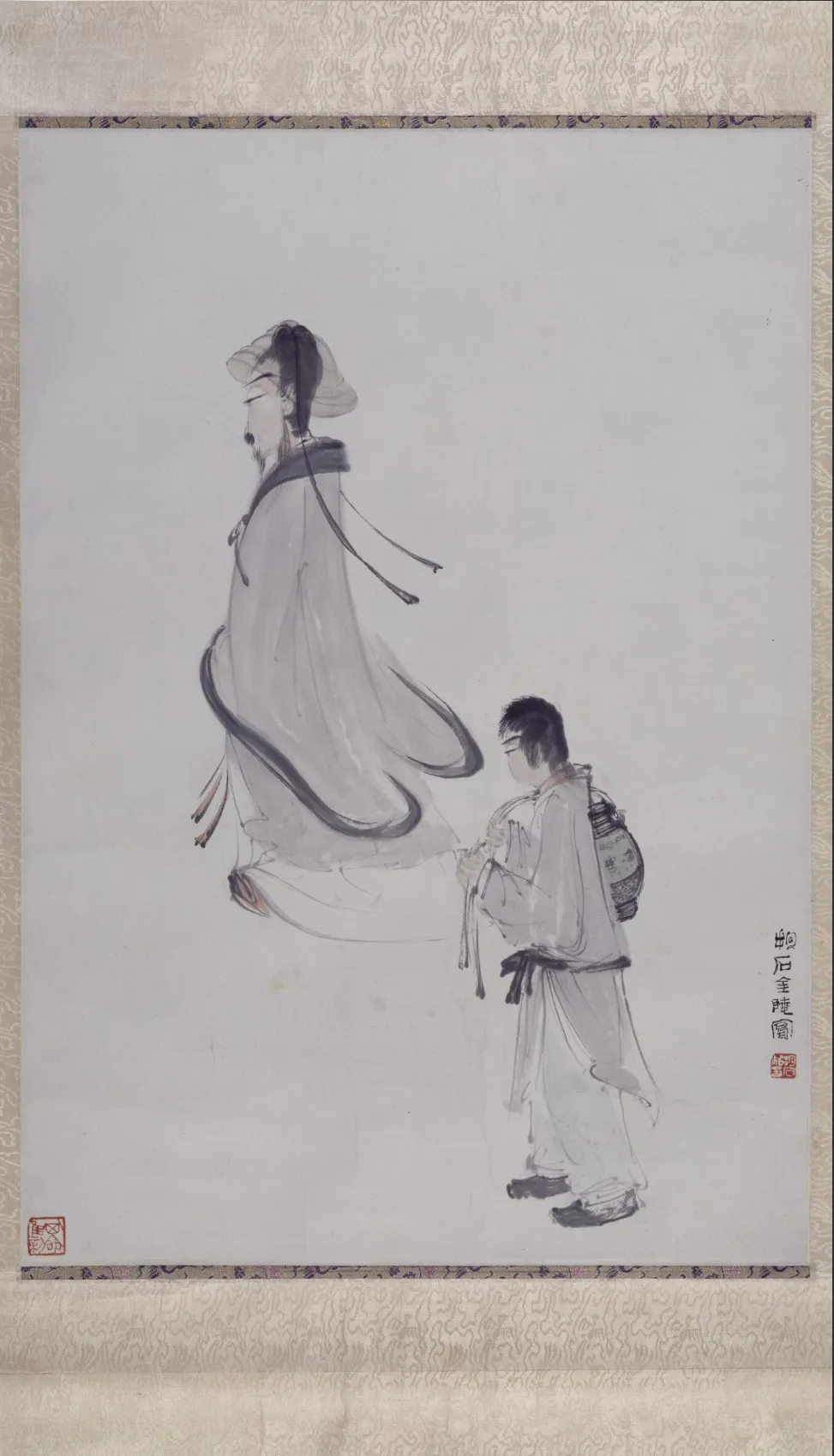
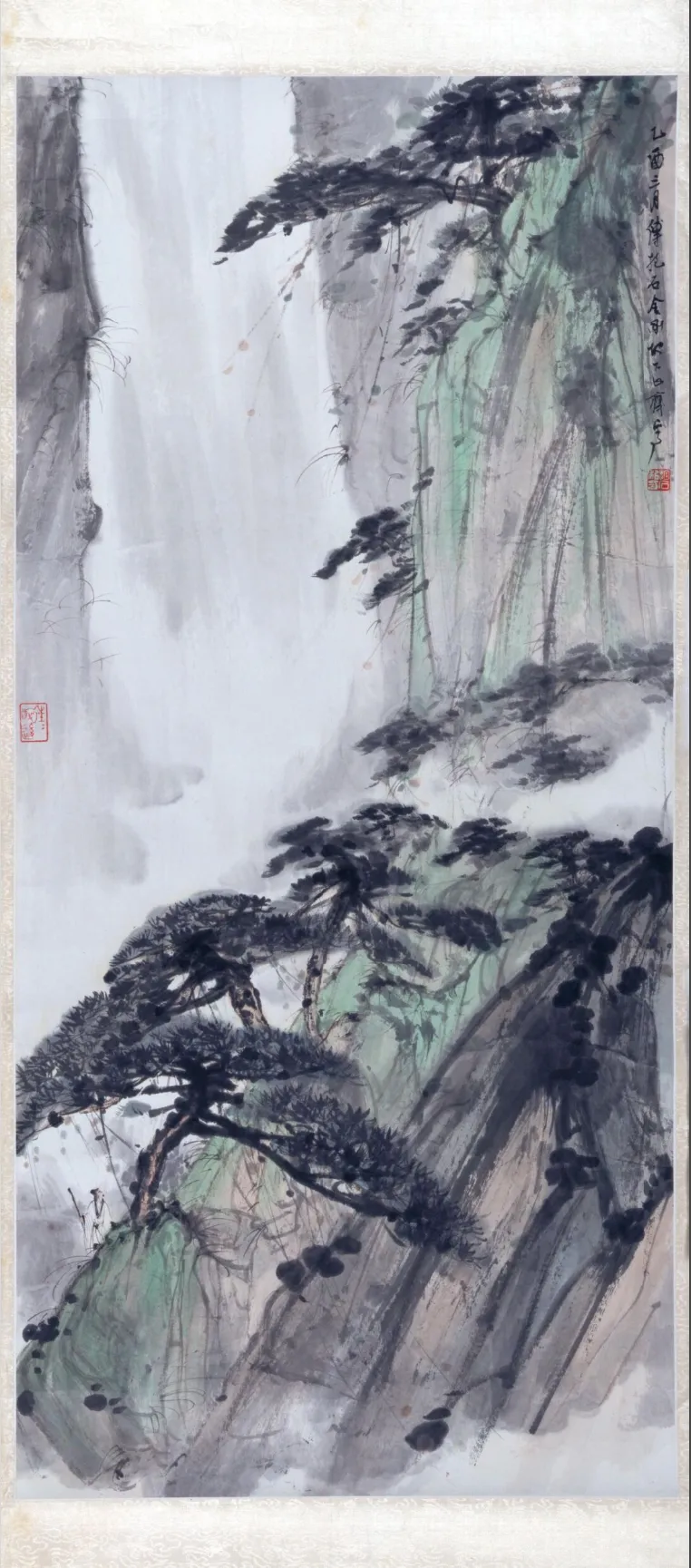
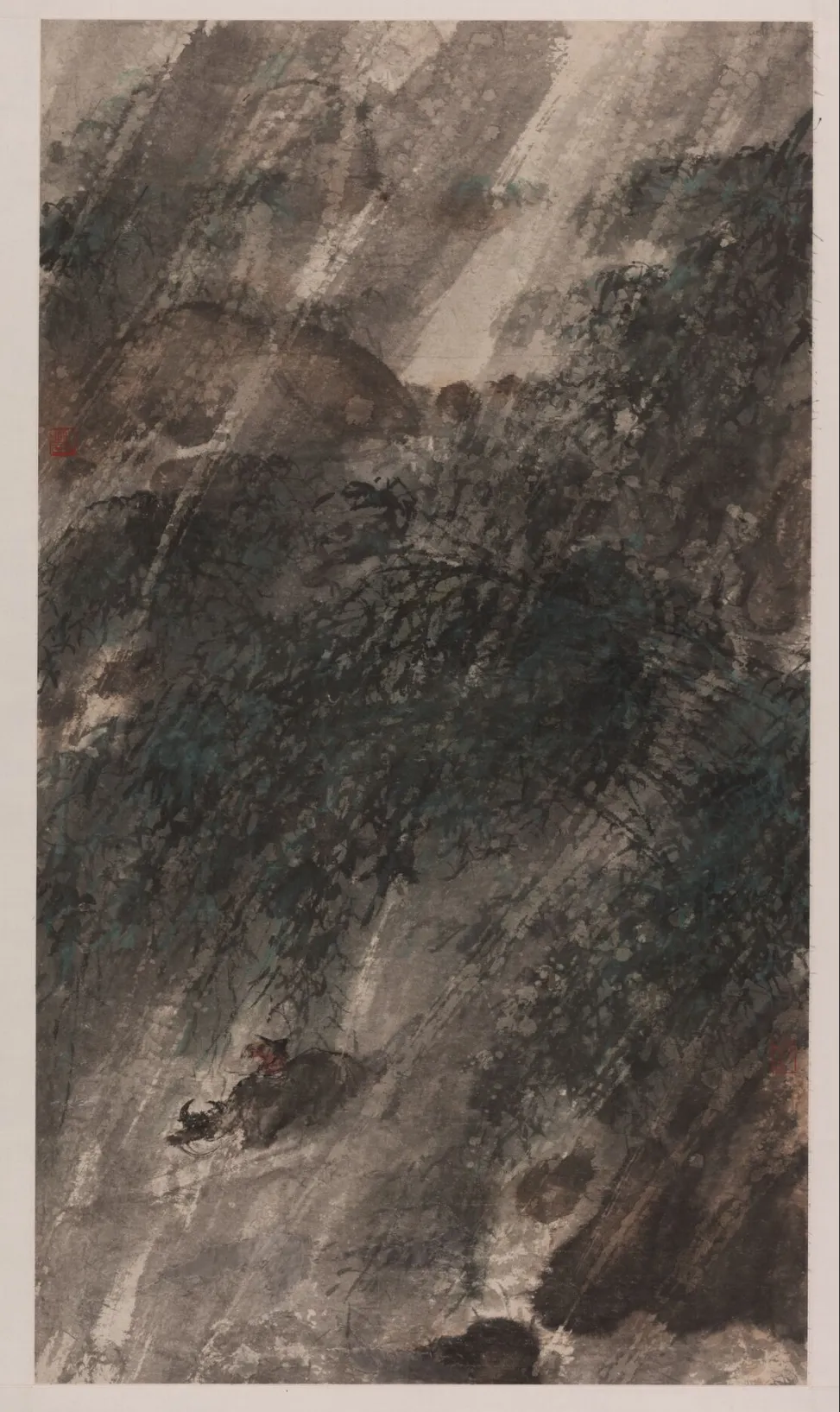
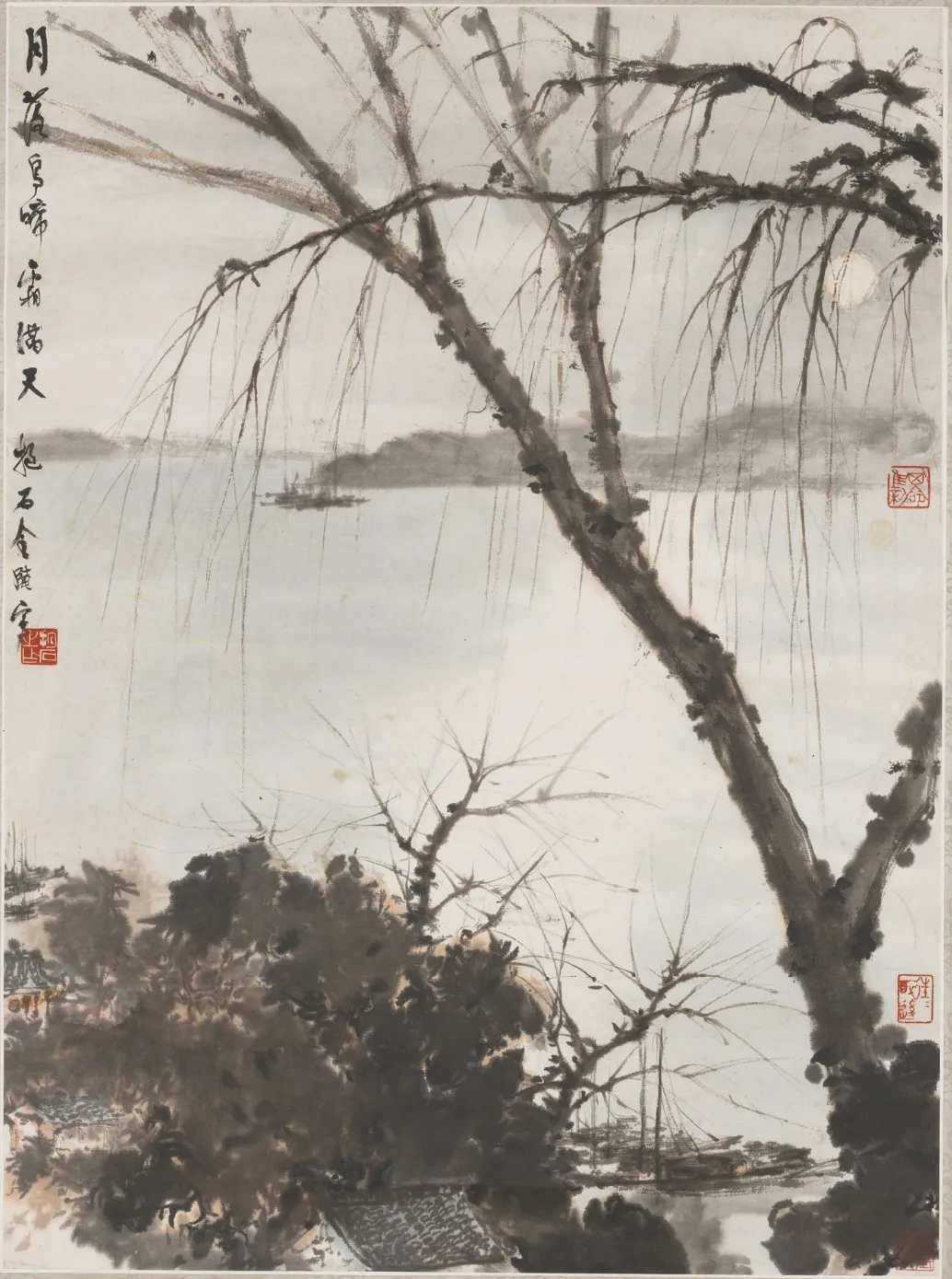
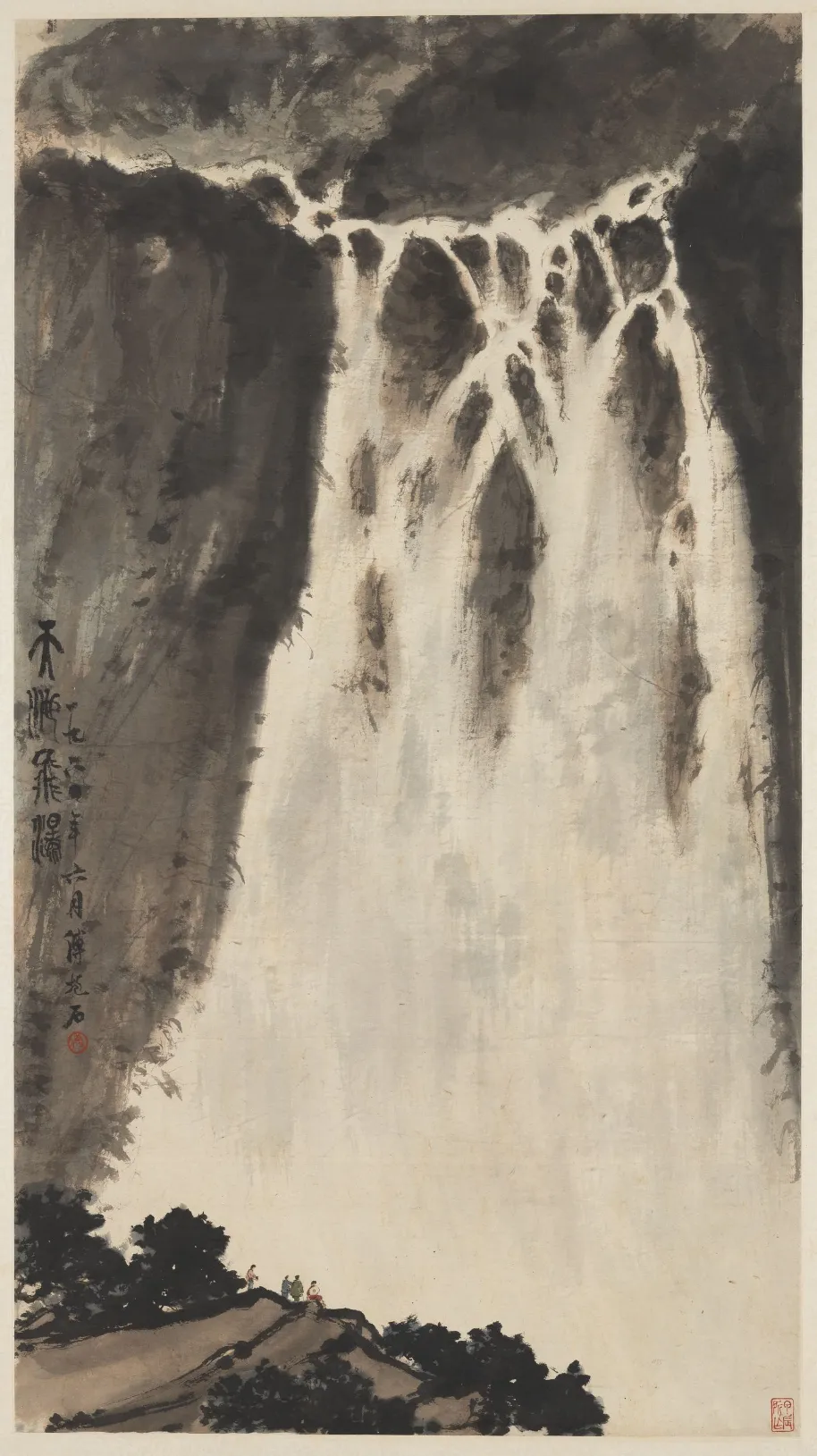
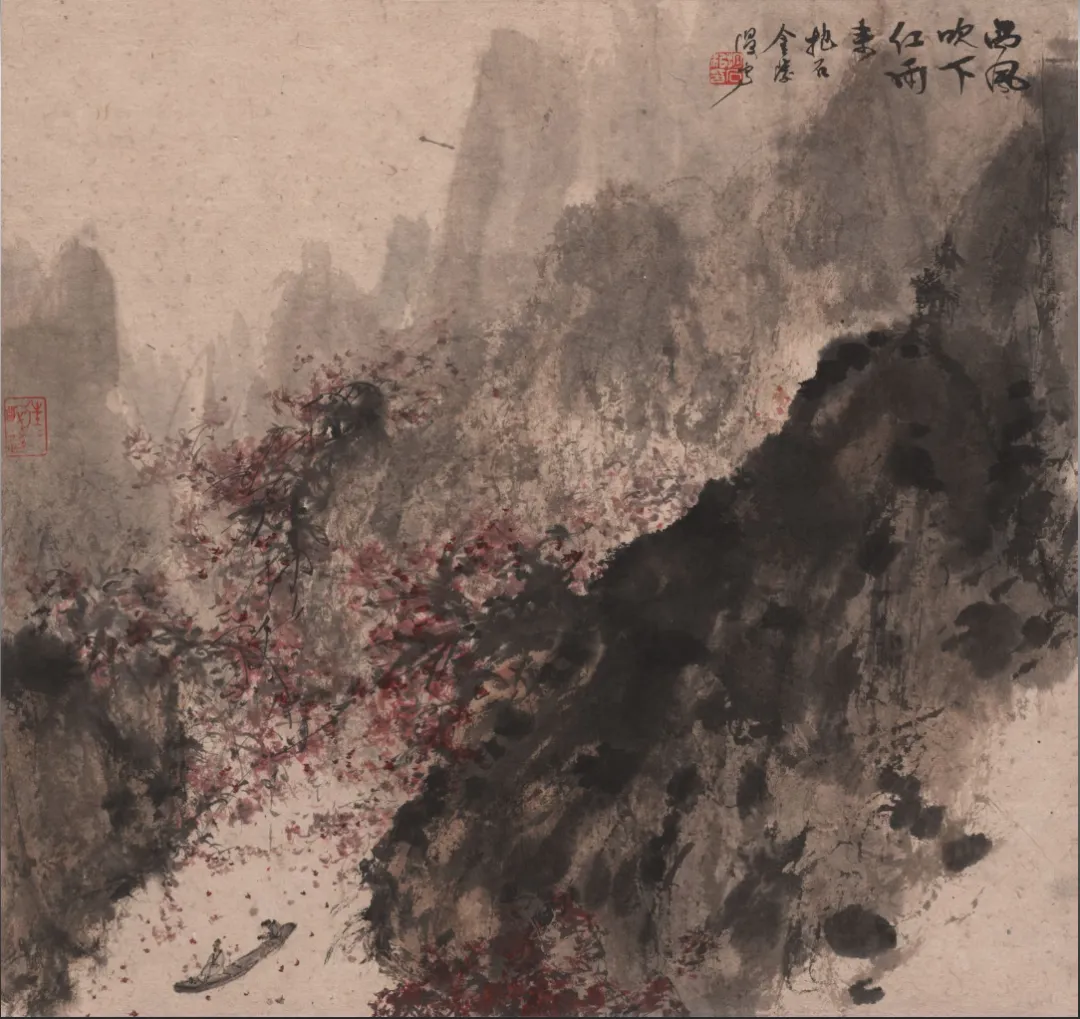
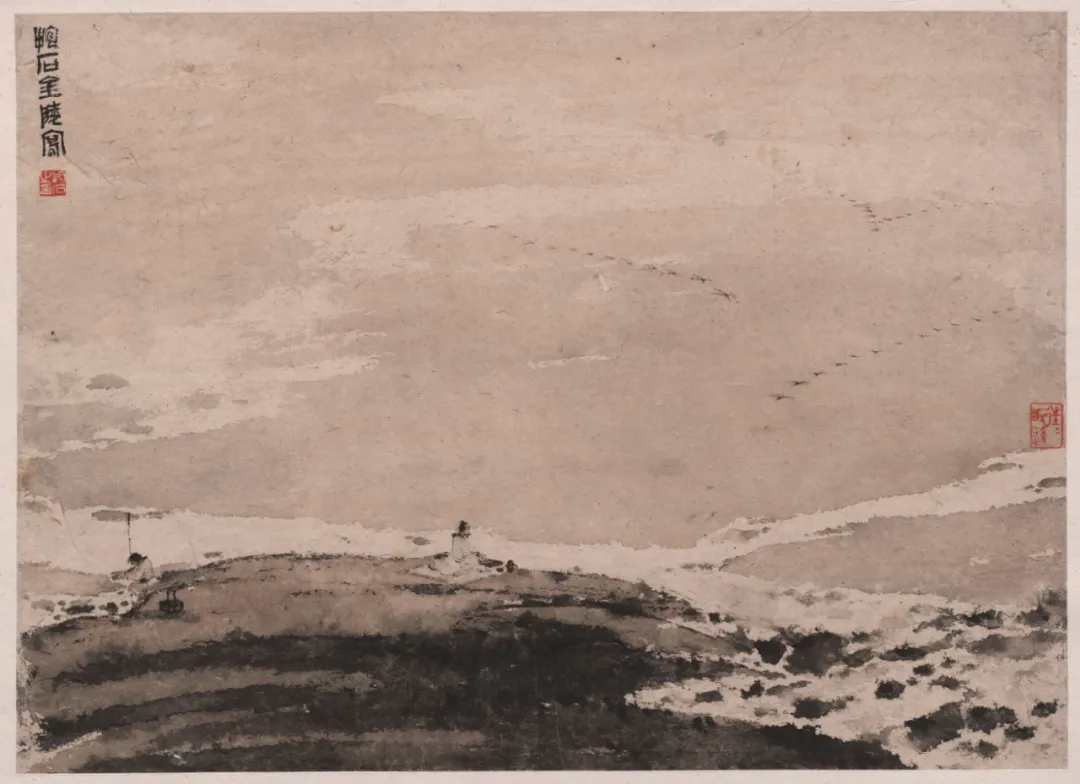
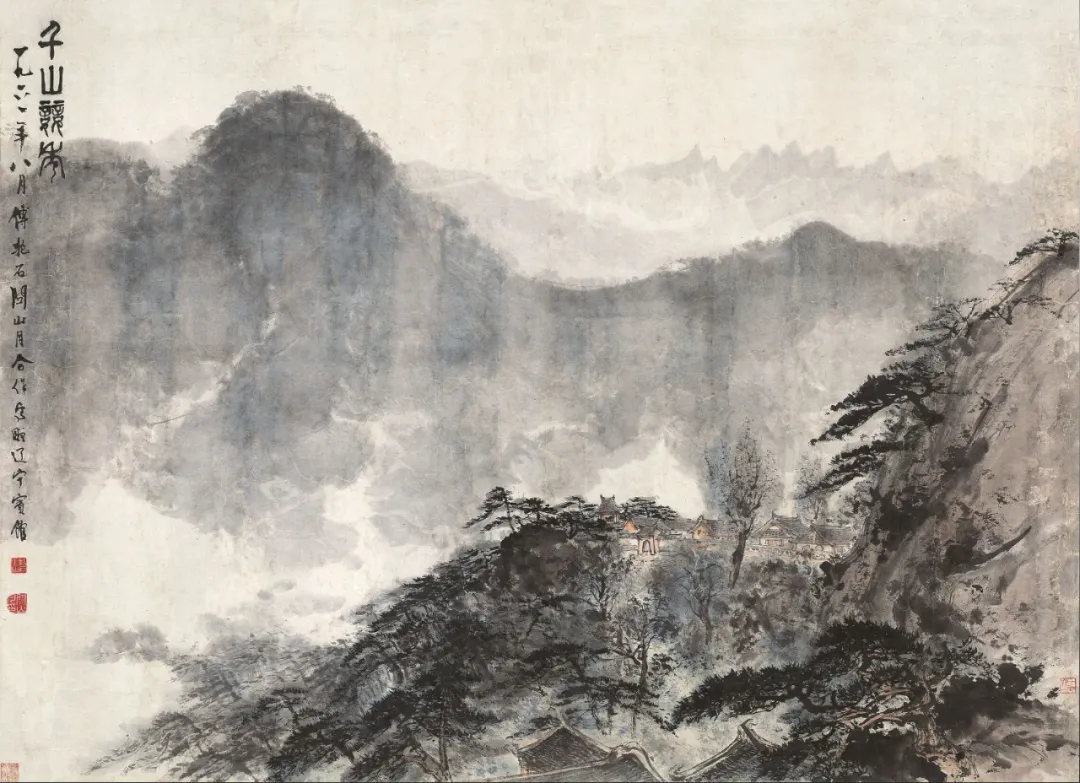


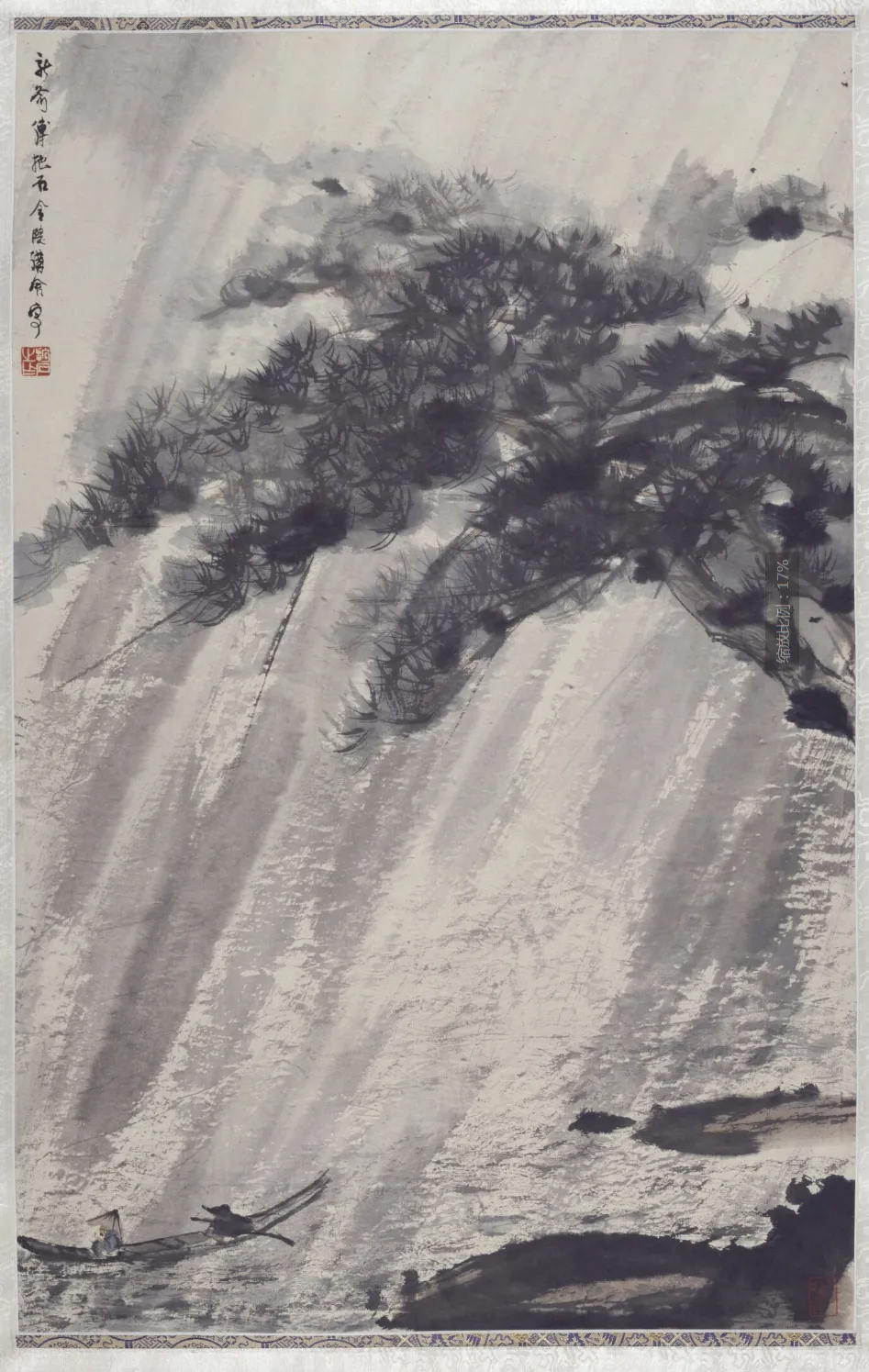

傅抱石论人物画,谓中国画之“线”最繁于衣纹。故其图写人物,一以练线之技,二以辅山水之作。两者较之,前者为重,盖此践其一贯人物画史之研究与创作之要旨——线条乃中国造型艺术之根本。傅氏为美术史家,人物画史烂熟于胸,能析魏晋至两宋人物画之条理,细加梳理。其所绘人物,皆蕴古意,妙达神韵。
Fu Baoshi believed that the "lines" in Chinese figure painting were most abundant in clothing patterns. Therefore, his depiction of figures aimed both to practice and expand the expression of lines, and to complement landscape creation. Of the two, the former was more important as it embodied his long-held concept that lines are the foundation of all Chinese art forms. As an art historian, he was well-versed in the history of figure painting, able to analyze and meticulously organize the works from the Wei, Jin, to the Song dynasties. His figures, imbued with ancient charm, captured the essence of spirit.
傅抱石人物画,前后风格无大异,人物造型大同小异,或几近相同。然观其高士、仕女,最动人心者,纸上飞动之线条也。其创作不泥于传统技法,工整笔法中融写意,笔触疏简迅捷,轻松自如,长线圆劲流畅,力求人物动态与神韵之高度统一,别开生面。傅氏平生,醉心于斯,执着于斯,终成就于斯。
Fu Baoshi's figure paintings showed little stylistic change over time. His figures, though similar in form, captivated viewers with their lively lines. In his creation, he did not adhere strictly to traditional techniques but integrated expressive elements into precise brushwork, displaying a light and swift touch combined with fluid long lines, striving for a unified depiction of movement and spirit. This unique approach set his work apart. Fu Baoshi devoted his life to this pursuit, achieving mastery through dedication and passion.
观傅抱石人物画,题材大抵二端:“构写前人之诗,将诗意移入画中”,与“营制历史美事”(见《壬午重庆画展自序》)。其尺幅间再现典故事迹,绘上古人物之袍冠,无不有据,显谙熟史料,求真务实之态。诗文意象入画,重现细节,实乃抒画家郁积之情,或喜或悲,或忿或怅。屡为屈原造像,因尊其忧国忧民之心,赏其卓绝之才。抗战时绘苏武拄节,以示抗敌之决。久慕魏晋名士寄情山水、浪迹江湖,情操高洁、归隐田园之陶渊明,遂为心契古人,《渊明沽酒》屡现其作。
Regarding themes, Fu Baoshi's figure paintings mainly comprised two categories: "depicting ancient poems, integrating their imagery into the painting," and "recreating historical beautiful tales" (as stated in the preface to his Chongqing exhibition in the year of Renwu). He meticulously recreated historical figures' robes and crowns, showing his deep knowledge of historical sources and a dedicated, realistic approach. By incorporating poetic imagery and historical details into his paintings, he expressed his complex emotions—joy, tranquility, anger, or melancholy. He frequently painted portraits of Qu Yuan, out of reverence for Qu's patriotic spirit and exceptional talent. During the War of Resistance, he depicted Han envoy Su Wu with his staff, symbolizing his determination to resist the Japanese invaders. Admiring the lifestyle of Wei and Jin scholars who immersed themselves in nature, and the noble character of recluse Tao Yuanming, Fu Baoshi often depicted scenes of "Yuanming Buying Wine," showing his deep connection with these historical figures.
傅氏之作,于古今诗文意境中得神韵,于史事故实中见真情。其笔触虽简,然意境深远,观者无不为之动容。此乃傅氏之大成,亦中国画之幸事也。
Fu Baoshi's works, deriving spirit from ancient and modern poetic imagery, and truth from historical facts, though simple in brushstroke, conveyed profound meanings, deeply moving all who beheld them. This was Fu Baoshi's great achievement, and indeed, a fortune for Chinese painting.
责任编辑:苗君